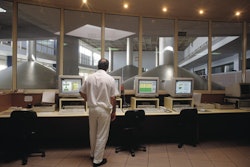It was over 50 years ago that the Hawkins family started selling their homemade salad dressings out of the family’s restaurant in Hope, Idaho. In 2006, the family sold the company to its employees, empowering all members to spark innovation and future growth. Today, Litehouse Foods is doing just that—innovating and growing—with the help of remote monitoring and control functionality.
“Remote monitoring and control functionality has allowed us to use our corporate employees’ expertise at remote sites, and has also given us the ability to bring commonality to our plants,” says Christopher Scott, controls engineer.
And, as Litehouse Foods increases its sophistication, it “will also allow remote alerting for out-of-control conditions, which can be communicated to plant engineers and supervisors for immediate remediation of plant floor issues,” adds Dan Hoffman, senior vice president of operations.
The Sandpoint, Idaho-based producer of refrigerated salad dressings, dips, cheese and more exercises responsible business practices, stewardship and sustainability with the help of Internet of Things (IoT) and IoT-enabled controls. “[We] started our IoT journey by implementing a plant floor operations technology (OT) network, which gives us complete isolation from IT and router capabilities to control our traffic going to the cloud,” says Scott. “Our architecture has been defined to include a secure OT layer that is protected from cyber-intrusion through the use of iDMZ technology (internet demilitarized zone), and includes some unique data redundancy capabilities and state-of-the-art switching technologies.”
On the factory floor, Litehouse Foods maintains a set of sensors that monitor various data-generation activities, such as ingredient delivery systems, production “counts” and some preventative maintenance sensor applications.
“We have also implemented temperature tags in our refrigerated delivery fleet (the trucks we use to deliver our product),” adds Hoffman. “With the OT network in place, we have been able to gather data through our supervisory control and data acquisition (SCADA) system, a system used for remote monitoring and control that operates with coded signals over communication channels (using typically one communication channel per remote station), as well as control batch applications, monitoring machine counts and providing remote access to vendors.”
For Litehouse Foods, batch applications include measurement of oil and buttermilk delivery systems, as well as recipe verifications. The SCADA system also monitors changes in recipes at the bill of materials level and provides change control for updated information, adds Scott.
“We are just scratching the surface of remote monitoring,” he says. “With the data that we will be collecting and analyzing, we hope to shed light on our inefficiencies and bring our plants’ quality standard to the tightest in the industry. It should also allow real-time process correction options.”
Remote monitoring and the IoT are exciting, adds Scott, and “we are glad to be on the forefront of implementing some of the newest technologies coming out of Industry 4.0. There is a lot of work and forethought involved in creating a path to remote monitoring, and we are just beginning.”



















